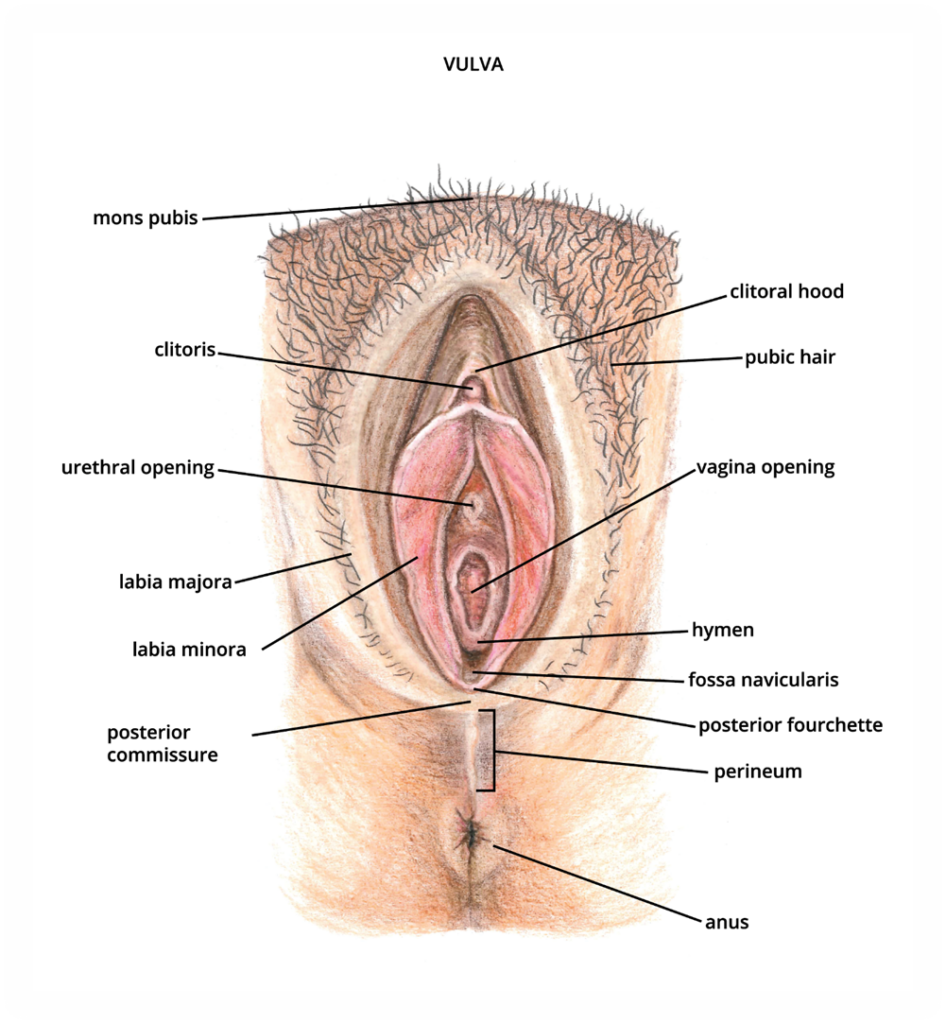-
Cervical os
“Opening in the crevix that leads to the endometrial cavity of the uterus” (Faugno et al., 2012, p. 4).
-
Cervix
“Inferior portion of the uterus;” between the body of the uterus and the vagina (Miranda, 2017, para. 24).
-
Clitoral hood
“A fold of skin covering the clitoris” (Faugno et al., 2012, p. 4).
-
Clitoris
“A small, cylindrical erectile body at the anterior portion of the vulva, covered by the clitoral hood” (Faugno et al., 2012, p. 4).
-
Fossa Navicularis
Depression between posterior margin of hymen and posterior fourchette.
-
Hymen
“A collar or semi-collar of tissue surrounding the vaginal orifice” (Faugno et al., 2012, p. 4).
-
Labia Majora
“Two folds of skin on either side of the labia minora. This area usually is covered with hair that appears during puberty” (Faugno et al., 2012, p. 4).
-
Labia Minora
“The longitudinal thin folds of non-keratinized skin medial to the labia majora. The labia minora are hairless but have many sensory nerve endings that engorge when stimulated” (Faugno et al., 2012, p. 4).
-
Mons Pubis
“Rounded fleshy prominence created by adipose tissue overlying the pubic symphysis bone” (Faugno et al., 2012, p. 4).
-
Perineum
“The external surface or base of the perineal body” between the vulva or scrotum and the anus (Faugno et al., 2012, p. 6).
-
Posterior Fornix
Annular area in the vagina around the outside of the cervix (Harris, et al., 2009).
-
Posterior Fourchette
“Area where labia minora meet posteriorly” (Faugno et al., 2012, p. 4).
-
Urethral Meatus
“External opening of the urethral tube” (Faugno et al., 2012, p. 5).
-
Vagina
“Muscular canal extending from the cervix to the hymen” (Faugno et al., 2012, p. 5).
-
Vulva
“An area of the femal genitalia lying posterior to the mons pubis that includes the labia majora, labia minora, clitoris, vaginal vestibule, vaginal introitus, and Bartholin’s glands” (Faugno et al., 2018, p. 5).

X
Instagram
Linked in
RSSYouTube